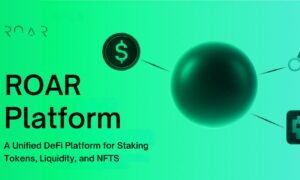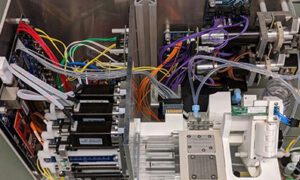People who work in banks often use terms like “dividend rate” and “APY” to refer to the same thing, but when it comes to checking accounts, they mean different things. The goal of this piece is to help you understand the differences APY vs dividend rate so that you can make smart financial decisions. We will talk about what a checking account payout rate is, how it varies from APY, and why it is important for your money.
Dividend Rate Basics
According to financial goods like savings accounts, certificates of deposit (CDs), or money market accounts, the Dividend Rate is the interest rate that a bank gives to users who have put money into these accounts every year. This rate, which is generally given as a number, shows how much the original sum will earn each year.
If you start a savings account with a payout rate of 0.5%, for every $100 you keep in the account, you will earn 0.5% of that amount each year as interest. In this case, you would get fifty cents in interest every year.
When considering different financial goods, it’s important to know the payout rate because it helps you figure out which account gives you the best return on your money. In addition, the payout rate may change based on the type of account you have, the amount of money you put in, and how long you keep your money in the account.
Dividend Rate on a Checking Account
In the case of a checking account, the yearly interest rate that the bank pays on the amount of your account is called the payout rate. This rate, which is usually given as a number, tells you how much interest you’ll make in the money you put in. Checking accounts, on the other hand, are mostly used for everyday activities and not to make interest. The dividend rate on a checking account is generally less than the dividend rate on a savings account because of this.
Consider a bank account with a payout rate of 0.05%. If you keep $5,000 in the account, you will make $25 in interest each year (0.05% of $5,000).
APY Basics
APY is the rate of return on an investment over a year. It takes into account how interest builds on itself over time. It gives a more accurate picture of how much your money has grown over time than the Annual Percentage Rate (APR), which only looks at simple interest and not how it adds up over time.
To understand APY, you need to know what “compound interest” means. After the first amount of interest is paid, more interest is added on top of that. This is called compound interest. This means that the interest you earn grows over time, which means you get more money back from your investment.
APY shows you a fuller picture of how your investment has grown since it considers the effect of interest that builds on itself over time. When you compare financial products, you should look at APY to make sure you’re getting the most out of your bucks.

APY vs. Dividend Rate
The Annual Percentage Yield (APY) adds the interest you already have to it and looks at how interest is made over time. Interest is paid on the amount in your checking account every year. This is called the payout rate. You earn interest on both the amount you put in at the beginning and the interest you’ve already made. The word for this is compounding. APY is a more accurate way to show how much money you’ve made because it shows how the interest adds up over a year.
To find the APY, you would need to know the rate of return, how often the interest is added (daily, weekly, or annually), and how long the money will stay in the account. To find APY, follow these steps:
APY = (1 + (Dividend Rate / Compounding Frequency))^(Compounding Frequency * Number of Years) – 1
Here’s how to find the APY if you plan to keep the money in the account for a year and the bank account pays out 0.05% every day, 365 days a year:
APY = (1 + (0.05% / 365))^(365 * 1) – 1
APY ≈ 0.0506%
There is a small difference between the APY and the payout rate, which shows that interest can build up over time.
Example of APY
You decide to open a high-yield savings account at a bank. The 5% Annual Percentage Yield (APY) sounds good, right? You choose to leave $10,000 in this account for a year without taking any money out.
If the APY was 5%, your account would make $500 in interest over a year. You should keep in mind that APY, not APR, takes into account income that grows over time. In other words, the bank might make more money if it adds interest more often, like once a month or every three months. The APR is used when effects that add up are not thought about. You can make the most money and get the most out of your savings if you choose an account with a higher APY and more regular growth.
The Importance of Understanding Dividend Rates and APY
It’s important to know the difference between APY and income rates in checking accounts for some reasons:
- Comparing Accounts: You can compare bank accounts and pick the one that gives you the best return on your money if you know how to figure and understand APY.
- Financial Planning: To make smart choices about how long to keep your money in a checking account and when to move it to an investment or account with a higher rate, you should understand how compound interest works.
- Budgeting and Financial Goals: You can make a better budget and plan for reaching your financial goals if you know exactly how much interest you earn on your checking account amount.
Conclusion
In short, the interest rate that is paid on a checking account every year is called the turnover rate. The yearly percentage yield (APY), on the other hand, shows the real return on your investment because it takes into account compound interest. If you know these things, you can make smart decisions about your bank account and your life in general. If you want to find the best bank account for your needs and goals with your money, don’t forget to look at the APY, return rate, and other things.



































